IT4Innovations is a research and development centre with strong international links, it is involved in all activities of EuroHPC Joint Undertaking and in a number of prestigious international organisations (PRACE, ETP4HPC, EUDAT, BDVA, EOSC).
IT4Innovations is currently a National Centre of Competence for HPC, a member of the MaX and Space Centres of Excellence and a partner in more than 10 other international projects of Horizon 2020, Horizon Europe or Digital Europe, coordinating the EXA4MIND project. It also collaborates on the European Space Agency (ESA) project called AIOPEN (Platform Extensions with AI Capabilities).
The implementation of national projects financially supported by the Ministry of Education, Youth and Sports, the Ministry of Industry and Trade, the Ministry of the Interior, the Grant Agency of the Czech Republic or the Technology Agency of the Czech Republic is also important. Some of the projects are carried out in the form of contract research with commercial entities.
TOP 5 IT4INnovations PROJEcTs

2023–2026
Project ID: LM2023054
Provider: Large Infrastructures for Research, Experimental Development and Innovation project
e-INFRA CZ is a unique e-infrastructure for research, development, and innovationin the Czech Republic, which represents a fully transparent environment providingcomplex capacities and resources for scientific data transfer, storage, and process-ing to all entities focused on research, development, and innovation across sectors.
It creates a communication, information, storage, and computing platform for re-search, development, and innovation both at the national and international levels. Italso provides an extensive and comprehensive portfolio of ICT services for conduct-ing modern research, development and innovation.
The main components of e-INFRA CZ include:
→ high-performance national communication infrastructure,
→ national grid and cloud infrastructure,
→ most powerful and state-of-the-art supercomputing systems in the Czech Republic,
→ high-capacity data storage facilities.
Other tools and services, such as access control to ICT resources, tools to supportremote cooperation, and tools to ensure secure communication and data protec-tion, are also an essential part and an added value of this infrastructure, contribut-ing to its efficient and diverse use.

EXA4MIND
EXtreme Analytics for MINing Data
2023–2025
Project ID: 101092944
EXA4MIND project will build an Extreme Data platform which brings together data storage systems and powerful computing infrastructures by implementing novel automated data management and effective data staging. The project is driven by four application cases from molecular dynamics, advanced driver assistance systems, smart agri-viticulture and health and social Big Data. The EXA4MIND proposes innovative solutions to complex everyday data-processing problems and addresses critical challenges like data analytics, Machine Learning and Artificial Intelligence at scale; effectively democratising access to and enabling connectivity across EU supercomputing centres.

EuroCC 2
National Competence Centres in the framework of EuroHPC Phase 2
2023–2025
Project ID: 101101903
The mission of EuroCC 2 is to continue the establishment of a network of National Competence Centres (NCC) in the most efficient way while continuing to address the differences in the maturity of HPC deployment in Europe. The main task of the overall activity is to support national centres in setting up their operational frameworks while accessing and making the most of the experience and expertise currently available at national and European levels. The main goal is to drive collaboration, and exchange of best practices and knowledge at the European level and to accelerate the improvement of national and thus European capabilities.

European Open Science Cloud Czech Republic
2023–2028
Project ID: CZ.02.01.01/00/22_004/0007682
The European Open Science Cloud (EOSC) is a European initiative focused on developing infrastructures supporting open science practices in research data management. It offers facilities for storing and sharing so-called FAIR research data – findable, accessible, interoperable, and reusable. The EOSC-CZ project is the implementation of the EOSC initiative in the Czech Republic, which aims to create a national node of this European initiative and promote good practice in research data management across scientific communities. Implementing National Data Infrastructures will create a common platform for sharing, managing, and accessing data and computing resources for research purposes. The NDI will support scientific and multidisciplinary research activities and include various scientific fields and disciplines.
More information here.
MAterials design at the eXascale
2023–2026
Project ID: 101093374
Materials simulations have become one of the most intensive and fast-growing domains for high-performance computing worldwide, with a recognized European leadership in developing and innovating the ecosystem of quantum simulation codes. MAX project will target these lighthouse codes to address the challenges and leverage the opportunities arising from future exascale and post-exascale architectures, and to offer powerful paths to discovery and innovation serving both scientific and industrial applications.
OTHER IT4INNOVATIONS PROJECTS

2025 – 2028
Project ID: CZ.02.01.01/00/23_029/0008437
Grant Provider: Programme Johannes Amos Comenius (MEYS)
The project serves to ensure mandatory national co-financing of the complementary international project of the same name CLARA (Center for Artificial Intelligence and Quantum Computing in System Brain Research). This national part of the project will ensure the acquisition and operation of the computing and data infrastructure of the CLARA project and thus ensure the fulfilment of one of the objectives of the CLARA project - the construction of the Testbed. The CLARA Testbed is based on the creation of an HW and SW platform that provides computational and data facilities for research on neurodegenerative diseases, including the development of new AI models, protein simulations, and connections to quantum computing infrastructure. Specifically, the project will procure an HPCQC – AI computing cluster and corresponding data storage, including funding for the costs of their operation.

2024 – 2028
Project ID: CZ.02.01.01/00/23_014/0008787
Provider: Programme Johannes Amos Comenius (MEYS)
The project will create a National Repository Platform, a universal facility for efficient work with FAIR research data. The National Repository Platform is a secure system of technical and software resources that will provide sufficient capacity to store and make available the data produced by state-supported projects. On top of this base, a system of services, tools, and methodological procedures will be available for the creation and long-term management of repositories and data care in accordance with FAIR principles.

2025 – 2028
Project ID: CZ.02.01.01/00/23_021/0008759
Provider: Programme Johannes Amos Comenius (MEYS)
The project focuses on research and development of software tools for analysing installation efficiency and resilience of new energy sources and storage capacities for use within energy communities and research in the field of hydrogen production, transport and storage. This includes social science research to promote acceptance of these specialised technologies by the general public, development of cooperation with the application sector, project preparation, infrastructure upgrade, and compliance with RIS3.

2024 – 2026
Project ID: FW10010202
Provider: TA CR (TREND programme)
The project aims to upgrade a range of vertical pumps with better hydraulic parameters, designed using hydraulic design know-how (SW) and new manufacturing processes (3D printing—WAAM welding technology). The project's R&D activities will be verified on a model pump. The project will focus on the overall upgrade of vertical pumps with respect to current market requirements.
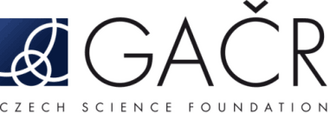
2025–2027
Project ID: 25-14529L
Provider: GACR
The aim of the project is to search for novel materials for magnetic refrigeration based on a large magneto- and barocaloric effects using the synergy of the theoretical ab-initio calculations and experimental materials-type studies. A special attention will be paid to the study of the thermal expansion in search of materials exhibiting negative thermal expansion (NTE) and magnetoelastic phase transition that may enhance the MCE/BCE due to the low thermal hysteresis, distinctive change of magnetic order and lattice parameters. The research will be conducted within international cooperation of experimental teams in PL and theoretical one from CZ.

2023–2026
Project identifier: CZ.02.01.01/00/23_016/0008329
Provider: MEYS CZ, Programme Johannes Amos Comenius
The aim of the project "Modernization of e-INFRA CZ II" is to modernize and upgrade specific components of the e-infrastructure – supercomputers and their facilities, MetaCentre computing clusters and immediately related storage capacities, new large data spaces for active work with data and increasing the capacity, quality and flexibility of the communication infrastructure (computer network CESNET3). This will provide the necessary ICT capacity in a form that will elevate IT infrastructure support to a level that covers the predicted requirements and needs of the user community across a broad spectrum of the research space, while matching the state-of-the-art level of the field.

2024–2026
Project identifier: CZ.01.01.01/01/22_002/0001028
Provider: MIT CR
Current commonly available imaging methods such as MRI and CT provide relatively simple visualisation of results and it is up to the specialist to evaluate what they see, usually based on black and white images only. It is his expertise that is required to understand the composition of the tissues. In this project, we will use artificial intelligence methods to automatically recognize different structures in tissues, such as a bloodstream, healthy organ tissue, a tumor, a mechanically damaged part of an organ, etc. At the same time, we will create visualization tools to present the results in virtual reality for teaching. Not only visualization techniques will be developed, but also haptic control with feedback and manipulation (controllability) of objects in virtual reality.

2023–2026
Project ID: CZ.01.01.01/01/2 2_002/0000605
Provider: MIT CR
The project, submitted under the OPTAK (Technologies and Applications for Competitiveness) Operational Programme and the Applications call, builds on the successful, more than 10-year cooperation of ZEBR s.r.o., Palacký University in Olomouc, and VSB-TUO in developing an instrument for spectral analysis of substances using Raman optical activity (ROA) detection. IT4I will be involved in developing a spectrometer for the measurement of Terahertz optical activity and circular dichroism, in particular, the development of a polarisation-sensitive device for time-domain THz ellipsometry, a terahertz optical path, and a polarisation state modulator.

2023–2026
Project ID: CZ.01.01.01/01/22_002/0000436
Provider: MIT CR
The project, based on the cooperation between Apollo Data s.r.o. and IT4Innovations National Supercomputing Center at VSB-TUO, aims to combine the innovation of medical systems in the field of refractive cataract surgery and standard cataract surgery together with a mobile application for patients enabling elementary indication of vision disorders in the comfort of their home. It also aims to simplify the process of initiating treatment, supporting the treatment process that has already started with follow-up care and long-term monitoring of the condition. In particular, IT4 Innovations will provide research and development of complex algorithms for diagnosing eye disorders from acquired images.

2024–2027
Project ID: 24-11388I
Provider: GACR
Material elastic properties are important for practical application. Nevertheless, for magnetic materials, high complexity emerges because of the coupling of magnetic and elastic properties. The postdoc project of Jakub Šebesta aims at the generalization of the spin-lattice dynamic approach beyond the scope of cubic materials. This model represents a highly efficient scheme to cover magnetoelastic behavior, such as magnetostriction or magnetoacoustic effects. However, the current approach applies only to simple structures. The generalization will allow one to study and explain magnetoelasticity in more complicated compounds and alloys, i.e. providing more useful materials with high application potential. Namely, the generalization of the magnetic terms in spin-lattice dynamic for tetragonal structures is suggested. Further, the derivation of sound wave propagation in lower symmetry is proposed. Finally, the influence of high-order correction in elastic and magnetoelasticity will be considered.

2023–2026
Project ID: 00734/2023/RRC
Provider: The Moravian-Silesian Region, the Global Experts Programme
The project brings together the expertise of carbon dot synthesis specialists who will focus on preparing dots with high quantum emission yields, particularly in the red and near-infrared, and on chiral carbon dots for sensing applications. These efforts will be supported by state-of-the-art materials characterization techniques to determine carbon dots' composition, structural properties, and electronic and ultrafast optical properties. This will be done in close collaboration with a theoretical computing group with expertise in complex structural models of a wide range of photoluminescent materials. The project serves as a means of transferring the know-how and bringing the expertise of Professor Andrey Rogach's group to the VŠB-TUO by importing their skills in materials and their characterisation and by creating a close collaboration between the teams involved.

2023–2028
Project ID: CZ.02.01.01/00/22_004/0007682
Provider: Programme Johannes Amos Comenius
The European Open Science Cloud (EOSC) is a European initiative focused on developing infrastructures supporting open science practices in research data management. It offers facilities for storing and sharing so-called FAIR research data – findable, accessible, interoperable, and reusable. The EOSC-CZ project is the implementation of the EOSC initiative in the Czech Republic, which aims to create a national node of this European initiative and promote good practice in research data management across scientific communities. Implementing National Data Infrastructures will create a common platform for sharing, managing, and accessing data and computing resources for research purposes. The NDI will support scientific and multidisciplinary research activities and include various scientific fields and disciplines.
More information here.

2023–2025
Project ID: LM2023054
e-INFRA CZ is a unique e-infrastructure for research, development, and innovation in the Czech Republic, which represents a fully transparent environment providing complex capacities and resources for scientific data transfer, storage, and processing to all entities focused on research, development, and innovation across sectors. It creates a communication, information, storage, and computing platform for research, development, and innovation both at the national and international levels. It also provides an extensive and comprehensive portfolio of ICT services for conducting modern research, development and innovation.
The main components of e-INFRA CZ include:
→ high-performance national communication infrastructure,
→ national grid and cloud infrastructure,
→ most powerful and state-of-the-art supercomputing systems in the Czech Republic,
→ high-capacity data storage facilities.
Other tools and services, such as access control to ICT resources, tools to support remote cooperation, and tools to ensure secure communication and data protection, are also an essential part and an added value of this infrastructure, contributing to its efficient and diverse use.

2022–2025
Project ID: LUASK22099
Provider: International cooperation in R&D&I
Two-dimensional materials provide a novel building platform for nanotechnology and functional nanodevices. The functional nanodevices, i.e., nano-sized devices, are expected to enter 21st-century modern society. One of them is a non-volatile magnetic memory element controlled by electrical current only involving anomalous effects (e.g., the anomalous Hall effect) due to spin-orbit coupling interaction in materials or on their interfaces. The project builds on the assumption that such an element contains a magnetic part for storing the information and a non-magnetic part with strong spin-orbit coupling, which allows the spin-orbit torque to control the magnetisation dynamics, i.e., reading and writing information. A key question addressed within this project is how the Joule heat produced due to the flow of current in such a nanodevice affects the spin-orbit torque. The project aims at exploring and explaining the proximity and temperature effects on spin-orbit torque in devices made of 2D materials forming van der Waals heterostructures. The experience and computational procedures of both partners (VSB-TUO and Pavol Jozef Šafárik University in Košice) will be applied to determine the thermoe-lectric phenomena and the influence of interfaces for experimentally relevant 2D spin-orbit torque systems.

2022–2025
Project ID: 22-35410K
Provider: GACR
Permanent magnets are a key technology for modern society with applications in air conditioning, mobility, and power generation. In state-of-the-art permanent magnets, the atomic-scale defects, like in the grain boundary phase, have the most significant effects on the macroscopic properties (e.g., coercivity). In this project, a quantitative theory of coercivity, in terms of the local atomic structure, the spatial variation of the intrinsic magnetic properties, and the physical micro-structure of the magnet will be studied. To achieve this goal, a unique scheme of simulation procedures will be developed between quantum mechanical calculations, atomic spin dynamics, and micromagnetic continuum simulations. Magnetic properties will, therefore, be newly taken into account on the atomic scale, i.e., with the inclusion of atomic interface defects and grain boundaries. This will avoid the use of former assumptions in the use of magnetic properties from solid phases. This will allow a multi-scale model to be built to determine the magnetic properties of real materials.

2022–2024
Project ID: 22-22322S
Provider: GACR
The recently discovered superconductivity in the nearly magnetic compound UTe2 boosted interest in unconventional superconductors. The results published so far indicate multiple superconducting phases and magnetic ordering induced by applying an external magnetic field and/or hydrostatic pressure. The revealed analogies of the behaviour of UTe2 with the properties of ferromagnetic superconductors URhGe, UCoGe and UGe2 may help develop a unified theory of unconventional superconductivity. The project will bring together experimentalists (Charles University) and theorists (VSB-TUO) to collaborate intensively in a comprehensive investigation of a complex phase diagram of UTe2 and related compounds employing a yet unseen combination of experimental measurements and state-of-the-art theoretical ab initio calculations of thermal expansion, magnetostriction, heat capacity, magnetisation, elastic constants, and electrical transport of unconventional superconductors under multi extreme conditions.
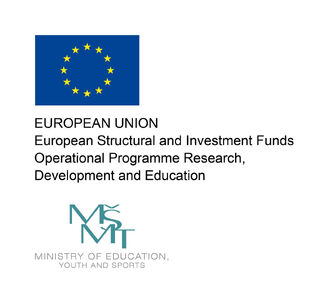
2021–2023
Project ID: DGS/TEAM/2020-033
Provider: Operational Programme Research, Development, and Education
The proposed project aims to develop computational procedures to solve non- linear structural dynamical problems. Moreover, the procedures will be applied to computational models of rotating machinery, discretised by three-dimensional finite elements, to analyse their vibrations. Within the scope of this project, investigators will develop procedures for (i) steady-state response determination utilising the Harmonic Balance Method (HBM), ii) determination of the amplitude-frequency response curve by the continuation technique, iii) the stability and essential bifurcation analysis of the steady-state response, iv) the identification of an optimal strategy for the amplitude-frequency response curve determination by the application of Total Finite Element Tearing and Interconnecting (T-FETI) on a linearised model, including the application of suitable preconditioners and coarse space projectors, and, v) the determination of the transient response of the model, based on corotational finite element formulation utilising time-integration. The procedures will be created and studied on the test cases in the MATLAB software and subsequently implemented in ESPRESO (ExaScale PaRallel FETI SOlver) developed as an open-source code project at IT4Innovations and tested on real industrial cases.

2021–2023
Project ID: CZ.01.1.02/0.0/0.0/20_321/0024953
Provider: the Operational Programme Enterprise and Innovation for Competitiveness
The aim of the joint industrial research project of Optaglio a.s. and VSB-TUO is to develop new products in the field of security holography that will be competitive on global markets. These are entirely new types of anti-counterfeiting features. In the framework of the presented project, we will focus on two original approaches to security holography, combining a high technical production level and advanced nanostructure design methods.
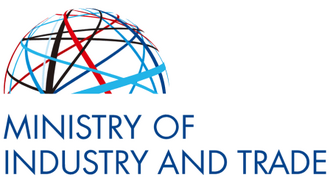
2021–2022
Project ID: CZ.01.1.02/0.0/0.0/20_321/0024308
Grant Provider: MIT CR
The project focused on the research and development of a new generation of modular control units for advanced aviation electromechanical actuators, which will find use in the next generation of aviation platforms known as More Electric Aircraft (MEA) and in the next generations of Full Electric Aircraft (FEA). These should contribute to making air transport more environmentally friendly by significantly increasing the use of electricity, which entails several changes, including a switch to a substantially higher voltage on-board network.

2021–2022
Project ID: DGS/TEAM/2020-020
Provider: Operational Programme Research, Development, and Education
The project represented a part of a broader research outlook, in collaboration with Université Toulouse III – Paul Sabatier (UPS), focused on investigating low-temperature rare-gas-based plasma for (most importantly) biomedical applications. It covered two double-degree dissertation theses (those of Beseda and Fresnelle) and two other theses (of Horáčková and Paláček). The project focused on modelling plasma interactions with air as the first step towards understanding the interactions between plasma active species with biomedical substrates. This project followed the previous research efforts (one co-supervised thesis, one double-degree thesis, and approximately eleven published papers).
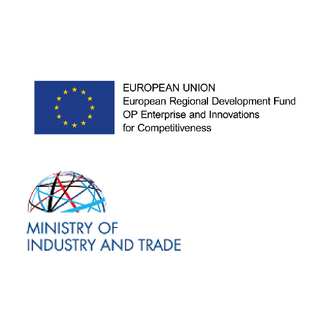
2021–2023
Project ID: CZ.01.1.02/0.0/0.0/21_374/0026707
Provider: Projects of the Operational Programme Enterprise and Innovation for Competitiveness
The project aims to create SW for the effective evaluation of catalytic processes and for comprehensive support in designing SCR technologies for industrial applications. The research and development activities solve the overall DeNOx process by reducing nitrogen oxides from the exhaust gases when reacting with gaseous NH3. The SW will be based on machine learning algorithms and flow calculations (CFD). The SW has a direct commercial application in nitrogen emission reduction solutions in power plants in both the Czech Republic and abroad.

2021–2023
Project ID: DGS/TEAM/2020-008
Provider: Operational Programme Research, Development, and Education
There is an ever-increasing need to visualise data from large computations on HPC systems. Monitoring such systems during their runtime and visualising this information properly is essential. To explore the data more intuitively, it is desirable to use 3D visualisations. For this purpose, we aim to create open-source tools that will allow data to be processed and visualised in high quality and support its presentation in virtual reality (VR). The developed tools will specifically focus on medical data visualisation, HPC cluster runtime monitoring, and the visualisation of simulation results from parallel open-source simulation tools. High-quality visualisations in VR are the primary goal of the project. Another goal is to strengthen cooperation among researchers with different specialisations.
The project will also enable and visualise resource consumption monitoring of IT4Innovations and their visualisation. This feature, which will be greatly appreciated by both administrators and users of these systems, will allow for follow-up research based on the data collected, such as research into energy-aware job scheduling.

2021–2023
Project ID: CZ.01.1.02/0.0/0.0/20_321/0024896
Provider: Projects of the Operational Programme Enterprise and Innovation for Competitiveness
The project goal is to create a SmartFleet platform, which should enable optimisation of company car fleets in terms of their composition and utilisation to maximise the share of cars that use alternative fuels (especially electric cars). The solution will be developed as interdisciplinary and open, which allows flexibility in terms of new inputs (e.g., location of hydrogen stations in the future) and enables iteration when considering modification of the car fleet and solving complete car fleet lifecycles.

2021–2023
Project ID: DGS/TEAM/2020-027
Provider: Operational Programme Research, Development, and Education
The terahertz (THz) spectral range holds immense potential for medical, security, and telecommunications applications. Therefore, it is desirable to develop new sources of terahertz waves with fast response, intense signal, controlled polarisation properties, and easy implementation. In this project, terahertz sources using spintronic phenomena such as terahertz spintronic emitters based on the spin-Hall effect and spin-laser-based THz sources will be designed, developed, and characterised. Photonic and plasmonic structures will be employed to enhance the performance of these devices, including Bragg grating and plasmonic materials for spintronic emitters and anisotropic 2D grating for spin lasers. Nonconventional characterisation methods will be used to describe spin mobility and broadband optical properties, including terahertz plasma-based time-domain spectroscopy and pump-probe terahertz measurements. Numerical simulations of ultrafast dynamics and spin transport will allow a deeper understanding of spin-based generation processes. The project is highly interdisciplinary, including approaches and methods from optics, magnetism, engineering, advanced nanotechnology, high-performance computing modelling, and applied quantum theory.

2021–2023
Project ID: TL05000184
Provider: TA CR
The project aims to create a comprehensive research report and software for the needs of the Ministry of Labour and Social Affairs based on an in-depth and comprehensive analysis of the position of Czech households according to the type of household, the number of children, and the absolute and relative income in the context of the tax-benefit system. The outputs of the in-depth analysis will serve as essential material for creating a model of the tax-benefit system implemented in software, of which the primary purpose will be to monitor and empirically evaluate the impact of legislative changes in current Czech family policy in the tax-benefit system on the socio-economic status of particular households and numbers of children.

2021–2023
Project ID: CZ.01.1.02/0.0/0.0/ 20_321/0024591
Provider: Projects of the Operational Programme Enterprise and Innovation for Competitiveness
The project aims to conduct research and development activities in the area of cloud and printing solutions. The project will be implemented in effective collaboration of Y Soft Print Management Solutions, a.s., with VSB-TUO and the Czech Technical University in Prague.

2020–2023
Project number: CZ.02.1.01/0.0/0.0/18_072/0015659
Provider: Operational Programme Research, Development and Education Project
The project aims to modernise and further develop the capacity of all e-infrastructure components so that the level of IT infrastructure support corresponds to the predicted requirements of the user community for the given period and simultaneously to the state-of-the-art level of the field. The project focuses primarily on the complete upgrade of all layers of the standard communication infrastructure and the upgrade of elements of the universal e-infrastructure capabilities for data storage and processing. An integral part of the solution will then be the optimal technological and logical interconnection of these upgraded capacities with analogous units in the European (GÉANT, EGI, EOSC, EuroHPC, ETP4HPC, EUDAT, PRACE, etc.) and global (GLIF) R&D area and, of course, with related infrastructures and entities at the national level.

Project ID: LM2018140
Provider: Large Infrastructures for Research, Experimental Development and Innovation project
e-INFRA CZ is a unique e-infrastructure for research, development, and innovation in the Czech Republic, which represents a fully transparent environment providing complex capacities and resources for scientific data transfer, storage, and processing to all entities focused on research, development, and innovation across sectors. It creates a communication, information, storage, and computing platform for research, development, and innovation both at the national and international levels. It also provides an extensive and comprehensive portfolio of ICT services for conducting modern research, development and innovation.
The main components of e-INFRA CZ include:
→ high-performance national communication infrastructure,
→ national grid and cloud infrastructure,
→ most powerful and state-of-the-art supercomputing systems in the Czech Republic,
→ high-capacity data storage facilities.
Other tools and services, such as access control to ICT resources, tools to support remote cooperation, and tools to ensure secure communication and data protection, are also an essential part and an added value of this infrastructure, contributing to its efficient and diverse use.

2020–2022
Project ID: 08183 2019 RRC (S516/20-96100-01RN)
Provider: The Moravian-Silesian Region
Financial support from the Moravian-Silesian Region was dedicated to the provision of discounted services related to the use of the IT4Innovations computational resources. This support was intended for small and medium-sized enterprises with a registered office or branch in the Moravian-Silesian Region and was provided under a de minimis regime. This support enabled progressive small and medium-sized enterprises, including start-ups, to use supercomputing technologies and expertise to develop their business activities.

2020–2022
Project ID: 8X20050
Provider: Researcher Mobility Support within international cooperation in R&D&I
The research was a complementary joint work of the following institutions – VSB-TUO, Prešov University, and the Donau-University Krems. The project consisted in finding novel RE-free permanent magnets using a detailed systematic study of Fe-Ta and Fe-Hf compounds using adaptive genetic algorithms. Best predicted structures, i.e., those exhibiting negative enthalpy (an indication of phase stability), high saturation magnetisation, and a uniaxial lattice, were further tested to see if they also show high magnetocrystalline anisotropy, exchange integrals (J’s), and temperature (T_C) of transition from magnetic to paramagnetic state. First, MAE and J’s were obtained from the quantum mechanical calculations using HPC infrastructure, followed by Tc obtained from the atomic spin dynamics calculations. The structural parameters of the most stable candidates were transferred to the Slovak partners to synthesise samples and to measure the number of magnetic quantities like magnetisation, magnetic susceptibility, etc. At the same time, the Austrian partner performed micromagnetic simulations to determine the magnetic behaviour of given materials in terms of their texture, shape, and thickness under various thermal conditions.

Project ID: CZ.02.2.69/0.0/0.0/18_053/0016985
Grant Provider: MEYS CR
The project will facilitate the mobility of 26 researchers of diverse nationalities to and from the Czech Republic. It will thus address the need for more international cooperation in research and the professional growth of human resources in research. Researchers will develop in their fields of study, transferring their knowledge to workplaces and research teams of VSB-TUO. The support is primarily directed at junior researchers with the potential to accelerate their research work.

2020–2022
Project ID: TK03020027
Grant Provider: TA CR
The main objective of the project was the development of a modular, mobile, robust, and scalable technology solution for the efficient conversion of alternative fuels, waste, and by products as alternative raw materials into usable chemicals and useful forms of energy, their storage, and efficient use, in accordance with the principles of a circular economy. The project was built on the research base of the National Center for Energy, integrated existing research capacities into the long-term strategic concept of CEET, and met the requirements of the State Energy Policy of the Czech Republic and the NAP. Without the unique merger and combination of the three logically linked research programmes, the desired synergy and rapid market feasibility would never have been achieved.

2020–2022
Project ID: FW2020151
Provider: TA CR
In compliance with the TREND programme, the main objective of the project was to increase the international competitiveness of the applicant Bonmedix Holding a.s., especially by penetrating markets in the EU and the USA with a newly developed service that will subsequently be certified as a medical device. The main objective was achieved through the development and subsequent clinical testing of the software prototype of an expert system for the automatic evaluation of pathologies from eye images in the diagnosis of diabetic retinopathy. The expert system used a computer neural network and mathematical and statistical methods to demonstrate its ability to automatically evaluate pathologies on eye images at a similar quality to fully qualified medical staff, and this ability was then clinically validated on real data.

2020–2022
Project ID: FW01010274
Provider: TA CR
The project’s main objective was to develop a functional sample of a railway vehicle detecting obstacles in the driving profile using a set of HW sensors, a sophisticated architecture for data processing, and artificial intelligence tools for the final identification of obstacles and their interpretation for the locomotive driver. As a key support for developing and optimising the detection system, the project included developing a software simulator for virtualising railway conditions and implementing test rides in a laboratory environment.

2020–2022
Project ID: 20-18392S
Provider: GAČR
The project dealt with the physical principles that will increase the phase stability region between the immiscibility and melting temperatures using an example of desired alloys with a self-passivation role for fusion reactor vessels. A phase diagram of the W-Cr system was constructed using first-principles methods, and the physical properties (speed of sound, melting temperature, immiscibility region) were determined. Both the phase diagram and these quantities were verified experimentally. Enriching the alloy with transition metals from the sixth period changed the phases’ melting and miscibility. The project’s main idea is to determine the change in these temperatures based on the change in the acoustic branches of the added element’s phonon spectrum (elasticity). Using XRD analysis and RUS measurements of the experimental samples, data was obtained to provide feedback for theoretical modelling to develop an alloy able to withstand a “Loss of Coolant Accident”. Furthermore, a physical model based on the Hubbard Hamiltonian was derived to determine the influence of quantities such as entropy on the behaviour of the immiscibility region.

2019–2022
Project ID: TN01000007
Grant Provider: TA CR
The National Centre for Energy (NCE) aimed to stimulate long-term cooperation among the leading research organisations and major application entities in the power industry. Consequently, unique infrastructures and know-how of expert teams of the existing research centres were shared by implementing joint applied research projects. The research agenda of the NCE was in line with the National RIS3 Strategy and focused on new technologies leading to the increased efficiency, safety, and reliability of existing energy units, the efficient deployment and operation of decentralised sources of energy, the use of alternative fuels to secure mineral resource independence and the energy self-sufficiency of the Czech Republic and the powering of grids safely and securely.

2019–2021
Project ID: 19-29698L
The project brings together experts in two related fields, numerical analysis and high-performance computing, to jointly develop fast and massively parallel methods for general discretisation of space-time boundary integral equations for the heat equation to enable adaptive mesh refinement in space and time. The developed methods will be based on clustering, which is used for discretisation with a constant time step and a fixed space mesh. To generate adaptive meshes, classical a posteriori estimate methods will be applied. Being memory--intensive, solution of global space-time problems requires the use of computing clusters. However, it also permits space-time parallelisation. An optimised and parallelised code will thus enable full performance utilisation of the existing as well as future supercomputers.

2019–2023
Project ID: TK02030039
Grant Provider: TA CR
The project aims to develop a new system solution for energy flow control in the energy platform of a Sophisticated Energy System (SEN) on the level of distribution networks to supply energy platforms of municipalities, towns, and microregions. The SEN will be supported by sophisticated control methods and prospective technologies to increase its security, reliability, raw material self-reliance, and energy self-sufficiency while maximising the exploitation of decentralised, particularly renewable sources of energy sources to ensure the readiness for a change in the energy system control concept after implementing the EU Winter Package, in compliance with the National Action Plan for Smart Grids and updated State Energy Conception.
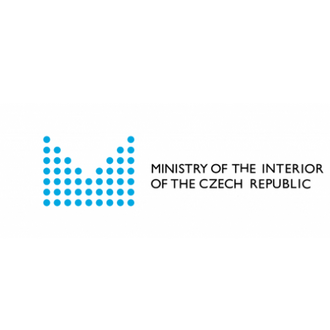
2019–2022
Project ID: VI20192022169
Grant Provider: Ministry of Interior CR
This project focused on deploying artificial intelligence technologies for the automated reception and processing of emergency calls using a voice chatbot in speech analytics, semantic analysis, dialogue management, and voice synthesis are expected, including the integration of geographical data. The output was a functional demonstrator working with real telephone calls under the condition of immediate deployment in an Integrated Rescue System (IRS) and recommendations for system integration and its further development towards IRS automation.
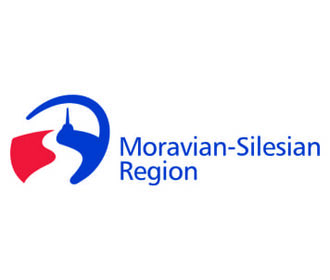
2019–2022
Project ID: 07685/2019/RRC
Grant Provider: Moravian-Silesian Region
The project aimed to support talented PhD students at VSB-TUO. The support of students was in the form of an additional payment to the regular doctoral scholarship for students. VSB-TUO, in cooperation with the Moravian-Silesian Region, contributed to better conditions for students in their scientific activities, especially concerning the use of the results of their scientific work in the application area.

2019–2022
Project ID: CZ.02.2.69/0.0/0.0/18_058/0010212
Grant Provider: MEYS CR
The project enhanced the quality and profile of educational activities and increased their relevance to the labour market. It implemented new forms of educational methods, established new study programmes, and boosted the internationalisation of the university and ties between the university and its graduates. It implemented methods for increasing the participation of students with special needs and improving the strategy for motivating secondary school students to enrol in tertiary education studies. It enhanced not only the capacities of the management personnel of higher education institutions (HEI) but also the quality of the HEI strategy management. The project’s main objective was to increase the relevance of VSB-TUO educational activities to the needs of the labour market. In practical terms, this means reaching a state where the university’s educational activities reflect the needs and unique features of the MSR labour market and all target groups.

2019–2022
Project ID: CZ.01.1.02/0.0/0.0/17_176/0015651
Provider: The Operational Programme Enterprise and Innovation for Competitiveness
The project aimed to research and develop the digital twin product at Siemens, s.r.o. The project was divided into two parts; the first part, i.e., the research and development of the digital twin product, an asynchronous electric motor, was conducted at the Siemens branch s.r.o. Elektromotory Frenštát.

2019–2022
Project ID: TN01000013
Provider: TACR
The PerMed Centre was focused on applied research in the diagnostics and therapy of rare and genetically determined diseases. The aim was to develop personalised diagnostic methods and drugs that would help specific groups of patients. The highly interdisciplinary approach combines medicine, chemistry, biology, genetics, and bioinformatics. All research activities included molecular target validation, biological chemistry, preclinical development, biomarker identification, and DNA analyses. The results of the PerMed Center were commercialised both by licensing as well as the establishment of spin-offs.

2019–2021
Project ID: TJ02000157
Provider: TAČR
The objective of the project is to create an optimisation system and a strategy for optimising the operation of the electrical distribution system (DS). The control optimisation system will consist of a program and an interface. The program will set various DS elements to optimise the DS operation in multiple ways (i.e., operation with minimal cost, with maximum reliability, etc.). Optimal DS configuration will be achieved, for example, by changing network topology or controlling local active and reactive power sources. The interface will allow the proposed program to be included in the existing dispatching control structures of the DS. The optimisation strategy will describe all the hardware and software innovations that need to be performed to maximise the DS management capabilities.

2019–2021
Project ID: TJ02000031
Provider: TAČR
The aim of this project is the development of an online insulation diagnostics tool for high-voltage overhead powerlines with covered conductors. A contactless sensor will be designed and constructed for test operation. This sensor will be used to record partial discharge patterns inside and on the surface of a covered conductor. An algorithm for automatic detection of partial discharge patterns in acquired signals will be created. Based on the presence of the partial discharge pattern in the acquired signal, the algorithm automatically evaluates the insulation state of the covered conductor. This goal will be met by the end of the project duration.

2018–2021
Identifikátor projektu: FV30104
The project objectives are as follows: 1. Development and verification of a multiphase numerical computational model utilising cavitation and free surface. 2. Experimental research of flow in the model intake and discharge objects and the creation of an experimental results database for verification of numerical computational models. 3. Utilisation of shape optimisation for the design of new pump and turbine stations, including intake and discharge objects.
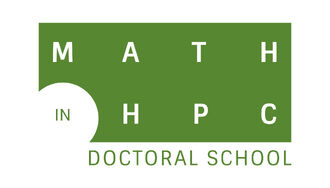
2017–2022
Project ID: CZ.02.2.69/0.0/0.0/16_018/0002713
Provider: Operational Programme Research, Development and Education
The main objective of the project was the establishment of a Doctoral School for Education in Mathematical Methods and Tools in HPC, integrating doctoral studies at Charles University (Faculty of Mathematics and Physics), the Czech Academy of Sciences (Institute of Mathematics), and VSB-TUO and building on their broader research cooperation. Part of the project was the modernisation and internationalisation of one of the doctoral programmes of the Doctoral School (Computational Sciences, VSB-TUO) and the creation of a new double-degree programme in collaboration with Université Toulouse III Paul Sabatier in France. → www.mathinhpc.cz

2017–2022
Project ID: EF16_013/0001791
Provider: Operational Programme Research, Development, and Education
The objective of the project was, among others, to extend IT4Innovations in-house research in the three following fields: 1) Modelling of photonic and spin-photonic structures, design of novel progressive materials based on electronic structure calculations, and bioimage analysis using HPC. In-house research is an essential source of HPC expertise for IT4Innovations, reflected in the infrastructure’s services to its users. 2) Use of approximations involving many-body effects (MB) in electrons. Further, it was the inclusion of temperature effects in computational methods, particularly anharmonic lattice vibration effects, and thus the possibility to study materials in near-realistic conditions. Finally, it was the possibility and access to study phenomena at the mesoscale level, i.e., those including tens of thousands to millions of atoms, such as the effect of interfaces, dislocations, and other defects on material properties, as they exist in natural materials and often limit their use. 3) Creating a globally unique platform for analysing biological and biomedical image data using the open-source FIJI platform’s high-performance computing (HPC) infrastructure.

2017–2022
Project ID: CZ.02. 1. 01/0. 0/0.0/15_003/0000466
Provider: Operational Programme Research, Development, and Education
The project yielded significant measures for developing informatics, robotics, and cybernetics research at the Czech Technical University in Prague. The project established a new AI and Reasoning research group within a given part of the Czech Institute of Informatics, Robotics, and Cybernetics (CIIRC), which focused on solving advanced interdisciplinary problems of high technical and social priority. The project was also supported by national partners (VSB-TUO and the University of West Bohemia in Pilsen). The motivation for their participation stems from the emphasis not only on the concentration and integration of resources and sharing of knowledge and infrastructure but also on establishing a “unified space for opportunities” for young talents in the Czech Republic.

